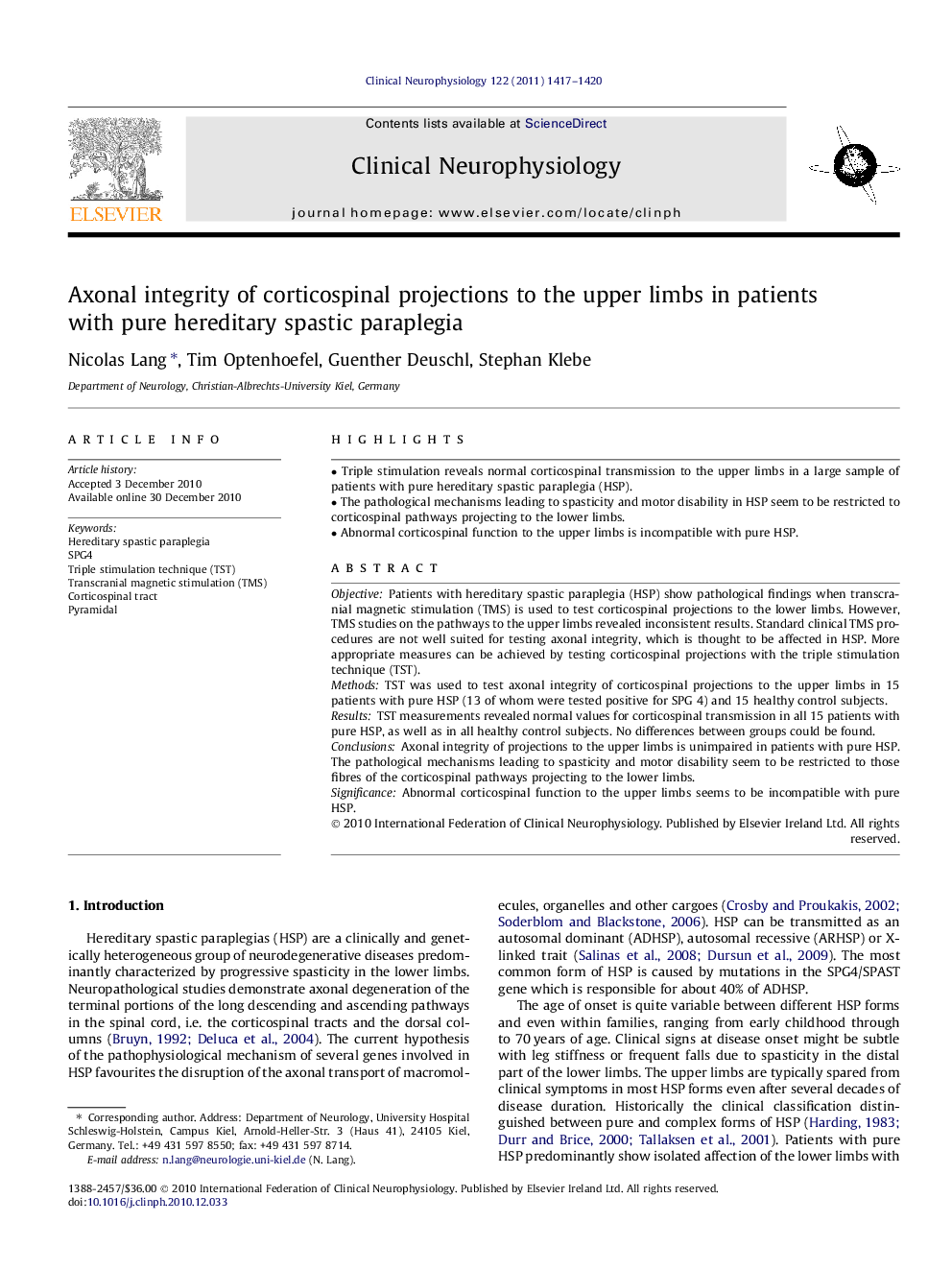| Article ID | Journal | Published Year | Pages | File Type |
|---|---|---|---|---|
| 3044787 | Clinical Neurophysiology | 2011 | 4 Pages |
ObjectivePatients with hereditary spastic paraplegia (HSP) show pathological findings when transcranial magnetic stimulation (TMS) is used to test corticospinal projections to the lower limbs. However, TMS studies on the pathways to the upper limbs revealed inconsistent results. Standard clinical TMS procedures are not well suited for testing axonal integrity, which is thought to be affected in HSP. More appropriate measures can be achieved by testing corticospinal projections with the triple stimulation technique (TST).MethodsTST was used to test axonal integrity of corticospinal projections to the upper limbs in 15 patients with pure HSP (13 of whom were tested positive for SPG 4) and 15 healthy control subjects.ResultsTST measurements revealed normal values for corticospinal transmission in all 15 patients with pure HSP, as well as in all healthy control subjects. No differences between groups could be found.ConclusionsAxonal integrity of projections to the upper limbs is unimpaired in patients with pure HSP. The pathological mechanisms leading to spasticity and motor disability seem to be restricted to those fibres of the corticospinal pathways projecting to the lower limbs.SignificanceAbnormal corticospinal function to the upper limbs seems to be incompatible with pure HSP.
► Triple stimulation reveals normal corticospinal transmission to the upper limbs in a large sample of patients with pure hereditary spastic paraplegia (HSP). ► The pathological mechanisms leading to spasticity and motor disability in HSP seem to be restricted to corticospinal pathways projecting to the lower limbs. ► Abnormal corticospinal function to the upper limbs is incompatible with pure HSP.
